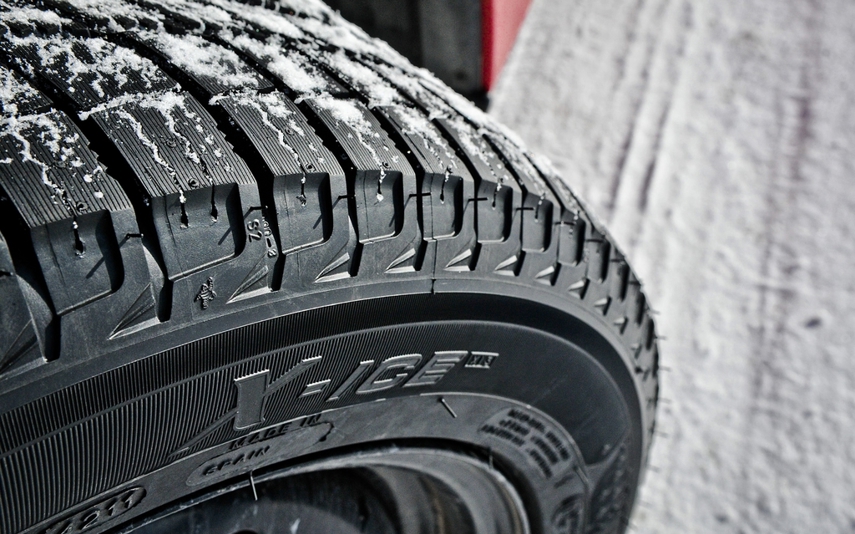There’s no such thing as the “best” winter tire.
“But what about my studded Nokian Hakkapeliittas!??!?! Those are surely the best winter tires amongst the universe!” – This will be the first post in the comments section.
But let me explain.
No single winter tire, whether from Finland and hard to pronounce, studded or not, and regardless of brand, is better than every winter tire at everything.
There are winter tires that are better than others at certain things – depending on what you drive, how you drive it, what you drive it on, where you live, the prevailing weather conditions there, and what you’re after from your ride in the colder months. Different horses for different courses, folks.
I’ve driven thousands of hours in hundreds of cars on dozens of types of winter tires over the course of some 12 or 13 winters to date. And when winter tire virgins ask, tweet and email, asking what the best winter tire is, I don’t tell them, because there isn’t one. Instead, I tell them what winter tire I run on my personal vehicle, a Subaru Forester, and why.
That tire is the Michelin X-Ice.
Internet winter tire experts may now proceed to the comments section to explain why I’m wrong. Others, and especially those considering their first set of new winter tires, may wish to read on.
Let me qualify a few things.
• I don’t do product placements, and nobody at Michelin has requested or compensated me to say their winter tire is my favourite.
• My opinion is not based on press materials or samples provided by Michelin, either. Instead, it’s based on roughly 1,000 kilometres a week spent driving, largely, on the highways of Central and Northern Ontario, every week of the year. In wintertime, this driving includes many different vehicles, wearing many different types of winter tires. It also includes a weekly pass through what us Northerners call the “Snow Belt”, a climatically lousy stretch of highway between Northern and Central Ontario which always seems to be in a bad mood.
• I always check which brand and model of tire I’m driving on, making a mental note of how they perform, for future reference. In this regard, I’ve been consistently impressed with X-Ice rubber for years.
Some context: it’s my belief that the majority of experienced drivers in the majority of vehicles travelling carefully on winter roads will be concerned, first and foremost, with being able to slow or stop should a hazard present itself. For anyone doing their best to drive according to the conditions, and to keep their eyes as far up the road as possible, excellent delivery of stopping power is the winter-tire attribute of maximum significance. Steering feel, off-the-line grip and noise levels are all second here. If there’s a moose up the way, I want my car to STOP – not to provide a crisp steering feel or more responsive cornering bite or a quieter ride at highway speeds on cold pavement.

That’s where the X-Ice rubber always seem to shine. Sure – some winter tires may steer with more precision on ice, feel more stable in deep snow or provide more off-the-line grip for quickly getting out of a traffic light when the pavement is cold, but the X-Ice tires have a consistently good bite under braking, on any surface I’ve ever used them to stop on.
You see a jack-knifed transport up the highway. Or a sea of brake lights as you come around a corner. Or notice through the heavy snowfall that there’s a broken-down snow-plow in the roadway ahead of you. Provided you’re looking far enough ahead, which you should be, your first reaction will be to brake – not to steer or accelerate.
I’ve noted far more brake pedal application required to engage the anti-lock brake function when stopping on X-Ice rubber in a variety of vehicles ranging from SUV’s to sports coupes to family sedans. This means the braking system has more traction – so ABS engages later, and works better when it does. Whether it’s the rubber compound, tread pattern or some combination of other factors, the X-Ice rubber, in my experience, simply feels consistently able to find lots and lots of stopping traction on more types of slippery surfaces than any other winter tire I’ve used.
So there you have it: if you’re a big time fan of being able to stop as quickly as possible on slippery roads, Michelin X-Ice tires won’t disappoint.
A few other notes, especially for winter tire virgins.
First, don’t get too hung up on which tires to get, or how much to spend. Provided you avoid crappy, ultra-budget, off-brand winter tires which are terrible, and opt for a set of winter rated rubber from a reputable brand, the difference switching from all-season to winter rubber will be huge whether you spend $170 or $300, or $500 per tire. The switch from an all-season to an affordable winter tire is, most often, a far more significant upgrade than switching from a $200 winter tire to a $350 one.
I’ve found the BF Goodrich Winter Slaloms to be all-around confidence-inspiring, especially with stopping power. Pirelli Sotozero winter rubber is also worth a note. The consistently impressive trait your writer notices of these isn’t the stopping bite, but rather, their ability to clear even thick, heavy slush from their treads at higher speeds. These feel like a sportier winter tire – and if your winter driving is more likely to take place on wet and slushy highways at higher speeds, you won’t go wrong with these.
Finally, are you thinking about studs? In my experience, they’re only really useful on glare ice. I never run them, and have never had issues. If you want them, go for it. But remember – they’ll only make an incremental improvement to traction on most surfaces and are not legal in all provinces.

